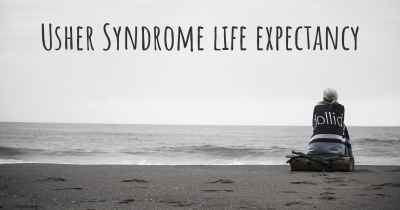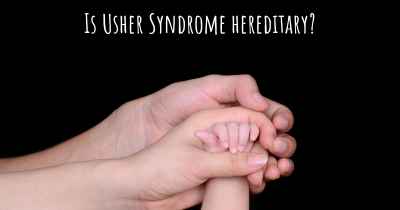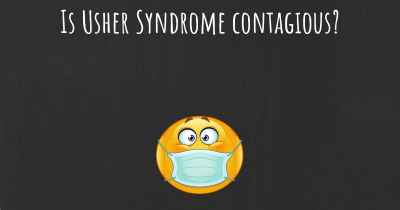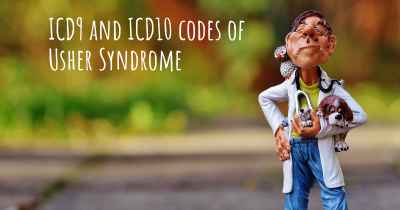How is Usher Syndrome diagnosed?
See how Usher Syndrome is diagnosed. Which specialists are essential to meet, what tests are needed and other useful information for the diagnosis of Usher Syndrome
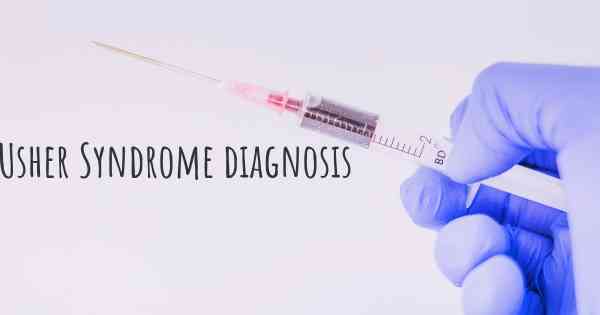
Usher Syndrome is a rare genetic disorder that affects both hearing and vision. It is characterized by varying degrees of hearing loss and progressive vision loss due to retinitis pigmentosa (RP). Diagnosing Usher Syndrome can be a complex process that involves a combination of medical history, physical examination, and specialized tests.
Medical History and Physical Examination
The first step in diagnosing Usher Syndrome is obtaining a detailed medical history. The healthcare provider will ask questions about the individual's symptoms, family history, and any other relevant information. It is important to provide accurate and comprehensive information to aid in the diagnosis.
Following the medical history, a thorough physical examination will be conducted. The healthcare provider will assess the individual's hearing, vision, and overall health. They may also look for specific physical features associated with Usher Syndrome, such as hearing aids or visual impairments.
Hearing Tests
Hearing loss is one of the primary symptoms of Usher Syndrome. To evaluate the extent and type of hearing loss, several hearing tests may be performed:
- Audiometry: This test measures the individual's ability to hear sounds of different frequencies and volumes. It involves wearing headphones and responding to tones played at various levels.
- Tympanometry: This test assesses the movement of the eardrum and the function of the middle ear. It helps determine if the hearing loss is conductive (related to the middle ear) or sensorineural (related to the inner ear or auditory nerve).
- Otoacoustic Emissions (OAE) Test: This test measures the sounds emitted by the inner ear in response to a stimulus. It helps determine the integrity of the cochlea, which is crucial in diagnosing Usher Syndrome.
- Electrocochleography (ECochG): This test measures the electrical activity generated by the cochlea in response to sound stimulation. It can help differentiate between inner ear and auditory nerve abnormalities.
Vision Tests
Since Usher Syndrome leads to progressive vision loss, a variety of vision tests are conducted to evaluate the individual's visual function:
- Visual Acuity Test: This test measures the individual's ability to see and identify small letters or symbols on an eye chart. It helps determine the clarity of vision.
- Visual Field Test: This test assesses the individual's peripheral vision by measuring their ability to detect and identify objects in their side vision while focusing on a central point.
- Electroretinography (ERG): This test measures the electrical responses of the retina to light stimulation. It helps evaluate the function of the retinal cells and can aid in diagnosing retinitis pigmentosa.
- Optical Coherence Tomography (OCT): This imaging test uses light waves to capture cross-sectional images of the retina. It helps visualize the layers of the retina and detect any abnormalities.
Genetic Testing
Genetic testing plays a crucial role in confirming the diagnosis of Usher Syndrome. It involves analyzing the individual's DNA to identify specific genetic mutations associated with the condition. Genetic testing can be performed through various methods, including:
- Targeted Gene Testing: This approach focuses on analyzing specific genes known to be associated with Usher Syndrome. It is particularly useful when a specific gene mutation is suspected based on the individual's symptoms or family history.
- Next-Generation Sequencing (NGS): NGS allows for the simultaneous analysis of multiple genes associated with Usher Syndrome. It provides a comprehensive genetic profile and can identify previously unknown mutations.
- Whole Exome Sequencing (WES): WES involves sequencing the protein-coding regions of all genes in an individual's genome. It is useful when the specific gene mutation causing Usher Syndrome is unknown.
Psychosocial Assessment
Diagnosing Usher Syndrome can have a significant impact on an individual's emotional well-being and quality of life. Therefore, a psychosocial assessment may be conducted to evaluate the individual's psychological and social needs. This assessment helps identify potential support services, counseling, and resources that can assist the individual and their family in coping with the diagnosis.
Conclusion
Diagnosing Usher Syndrome involves a comprehensive evaluation of an individual's medical history, physical examination, hearing tests, vision tests, genetic testing, and psychosocial assessment. The combination of these assessments helps healthcare professionals determine the presence of Usher Syndrome and its specific subtype. Early diagnosis is crucial for implementing appropriate interventions, providing support, and managing the progressive hearing and vision loss associated with Usher Syndrome.
Posted Jul 3, 2018 by Usher Initiative Austria
Posted May 8, 2017 by Rudo 1050
Effectieve sluutende diagnose enkel via genetisch onderzoek via bloedafname
Posted Jun 17, 2021 by Deborah 2500
